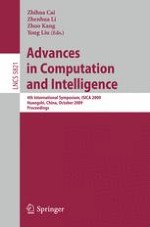2009 | Buch
Advances in Computation and Intelligence
4th International Symposium, ISICA 2009 Huangshi, China, Ocotober 23-25, 2009 Proceedings
herausgegeben von: Zhihua Cai, Zhenhua Li, Zhuo Kang, Yong Liu
Verlag: Springer Berlin Heidelberg
Buchreihe : Lecture Notes in Computer Science
